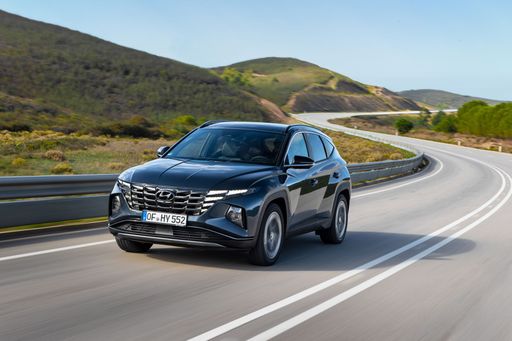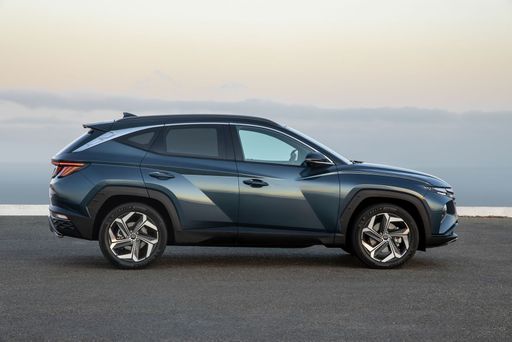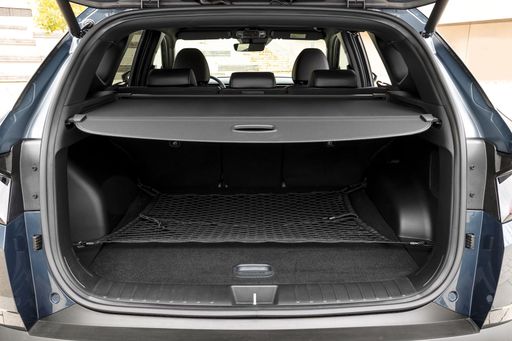Hyundai Tucson vs Fiat Grande Panda – Which model is better for everyday use?
Both models have their strengths – but which one suits you more?
Compare performance, efficiency, price and space directly: Hyundai Tucson or Fiat Grande Panda?
Here’s where it gets real: The technical differences in detail
Costs and Efficiency: Price and efficiency are key factors when choosing a car – and this is often where the real differences emerge.
Fiat Grande Panda has a decisively advantage in terms of price – it starts at 16300 £, while the Hyundai Tucson costs 30600 £. That’s a price difference of around 14357 £.
Fuel consumption also shows a difference: the Hyundai Tucson manages with 1 L and is therefore decisively more efficient than the Fiat Grande Panda with 5.10 L. The difference is about 4.10 L per 100 km.
As for range, the Fiat Grande Panda performs clearly better – achieving up to 320 km, about 250 km more than the Hyundai Tucson.
Engine and Performance: Power, torque and acceleration say a lot about how a car feels on the road. This is where you see which model delivers more driving dynamics.
When it comes to engine power, the Hyundai Tucson has a decisively edge – offering 252 HP compared to 113 HP. That’s roughly 139 HP more horsepower.
In acceleration from 0 to 100 km/h, the Hyundai Tucson is distinct quicker – completing the sprint in 7.90 s, while the Fiat Grande Panda takes 10 s. That’s about 2.10 s faster.
In terms of top speed, the Hyundai Tucson performs somewhat better – reaching 194 km/h, while the Fiat Grande Panda tops out at 160 km/h. The difference is around 34 km/h.
There’s also a difference in torque: the Hyundai Tucson pulls significantly stronger with 367 Nm compared to 205 Nm. That’s about 162 Nm difference.
Space and Everyday Use: Whether family car or daily driver – which one offers more room, flexibility and comfort?
Both vehicles offer seating for 5 people.
In curb weight, the Fiat Grande Panda is somewhat lighter – 1295 kg compared to 1520 kg. The difference is around 225 kg.
In terms of boot space, the Hyundai Tucson offers noticeable more room – 620 L compared to 412 L. That’s a difference of about 208 L.
In maximum load capacity, the Hyundai Tucson performs evident better – up to 1799 L, which is about 433 L more than the Fiat Grande Panda.
When it comes to payload, Hyundai Tucson somewhat takes the win – 545 kg compared to 453 kg. That’s a difference of about 92 kg.
All in all, the Hyundai Tucson shows itself to be outperforms in nearly all aspects and secures the title of DriveDuel Champion.
It impresses with the more balanced overall package and proves to be the more versatile companion for everyday use.
Hyundai Tucson
The Hyundai Tucson is a standout choice in the compact SUV segment, offering a perfect blend of style, comfort, and practicality. Its modern design is complemented by a spacious interior that provides ample room for passengers and luggage alike. With advanced technology and safety features, the Tucson ensures a smooth and enjoyable driving experience.
details @ hyundai.news
@ hyundai.news
 @ hyundai.news
@ hyundai.news
 @ hyundai.news
@ hyundai.news
 @ hyundai.news
@ hyundai.news
 @ hyundai.news
@ hyundai.news
Fiat Grande Panda
The Grande Panda is a delightful blend of practicality and charm, making it a popular choice for urban dwellers and families alike. With its compact design, the car navigates city streets effortlessly while providing ample interior space for passengers and cargo. Its quirky styling and user-friendly features make the Grande Panda not just a mode of transport, but a fun driving experience.
details

|
|
|
|
|
Costs and Consumption |
|
|---|---|
|
Price
30600 - 46300 £
|
Price
16300 - 24000 £
|
|
Consumption L/100km
1 - 6.9 L
|
Consumption L/100km
5.1 - 5.7 L
|
|
Consumption kWh/100km
-
|
Consumption kWh/100km
16.80 kWh
|
|
Electric Range
64 - 70 km
|
Electric Range
320 km
|
|
Battery Capacity
-
|
Battery Capacity
43.80 kWh
|
|
co2
22 - 156 g/km
|
co2
0 - 130 g/km
|
|
Fuel tank capacity
42 - 54 L
|
Fuel tank capacity
44 L
|
Dimensions and Body |
|
|---|---|
|
Body Type
SUV
|
Body Type
SUV
|
|
Seats
5
|
Seats
5
|
|
Doors
5
|
Doors
5
|
|
Curb weight
1520 - 1889 kg
|
Curb weight
1295 - 1554 kg
|
|
Trunk capacity
546 - 620 L
|
Trunk capacity
361 - 412 L
|
|
Length
4510 - 4520 mm
|
Length
3999 mm
|
|
Width
1865 mm
|
Width
1763 mm
|
|
Height
1650 mm
|
Height
1581 - 1629 mm
|
|
Max trunk capacity
1721 - 1799 L
|
Max trunk capacity
1315 - 1366 L
|
|
Payload
525 - 545 kg
|
Payload
353 - 453 kg
|
Engine and Performance |
|
|---|---|
|
Engine Type
Diesel MHEV, Petrol MHEV, Petrol, Full Hybrid, Plugin Hybrid
|
Engine Type
Petrol MHEV, Electric, Petrol
|
|
Transmission
Automatic, Manuel
|
Transmission
Automatic, Manuel
|
|
Transmission Detail
Dual-Clutch Automatic, Manual Gearbox, Automatic Gearbox
|
Transmission Detail
Dual-Clutch Automatic, Reduction Gearbox, Manual Gearbox
|
|
Drive Type
Front-Wheel Drive, All-Wheel Drive
|
Drive Type
Front-Wheel Drive
|
|
Power HP
136 - 252 HP
|
Power HP
100 - 113 HP
|
|
Acceleration 0-100km/h
7.9 - 11.6 s
|
Acceleration 0-100km/h
10 - 11.5 s
|
|
Max Speed
180 - 194 km/h
|
Max Speed
132 - 160 km/h
|
|
Torque
265 - 367 Nm
|
Torque
122 - 205 Nm
|
|
Number of Cylinders
4
|
Number of Cylinders
3
|
|
Power kW
100 - 185 kW
|
Power kW
74 - 83 kW
|
|
Engine capacity
1598 cm3
|
Engine capacity
1199 cm3
|
General |
|
|---|---|
|
Model Year
2024
|
Model Year
2025
|
|
CO2 Efficiency Class
E, F, D, B
|
CO2 Efficiency Class
D, A
|
|
Brand
Hyundai
|
Brand
Fiat
|
What drive types are available for the Hyundai Tucson?
Available configurations include Front-Wheel Drive or All-Wheel Drive.
The prices and data displayed are estimates based on German list prices and may vary by country. This information is not legally binding.
